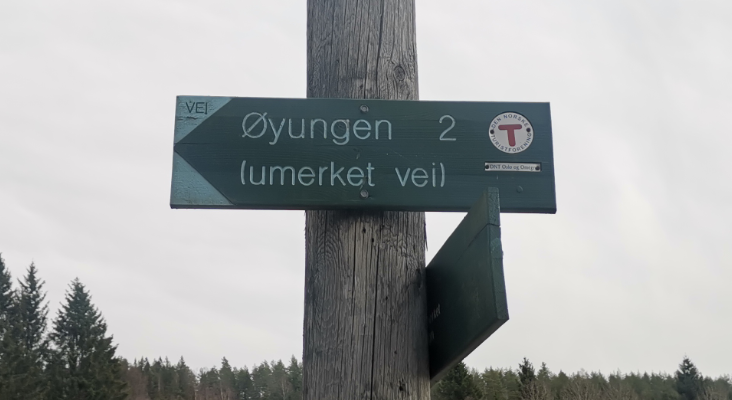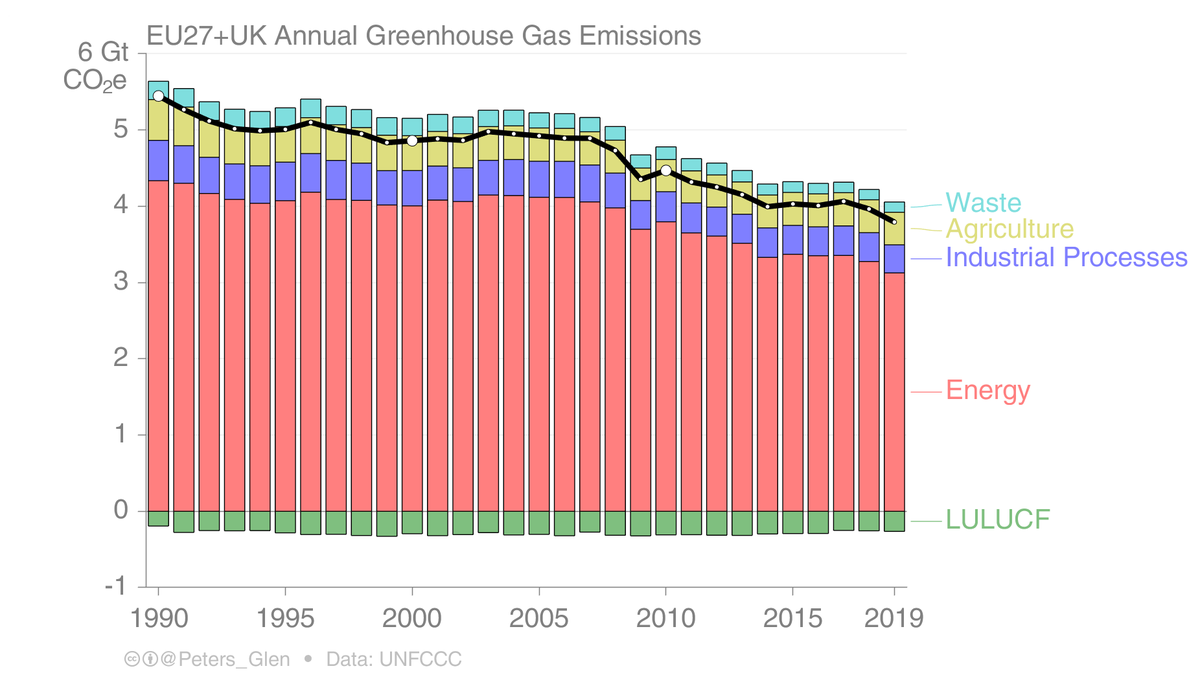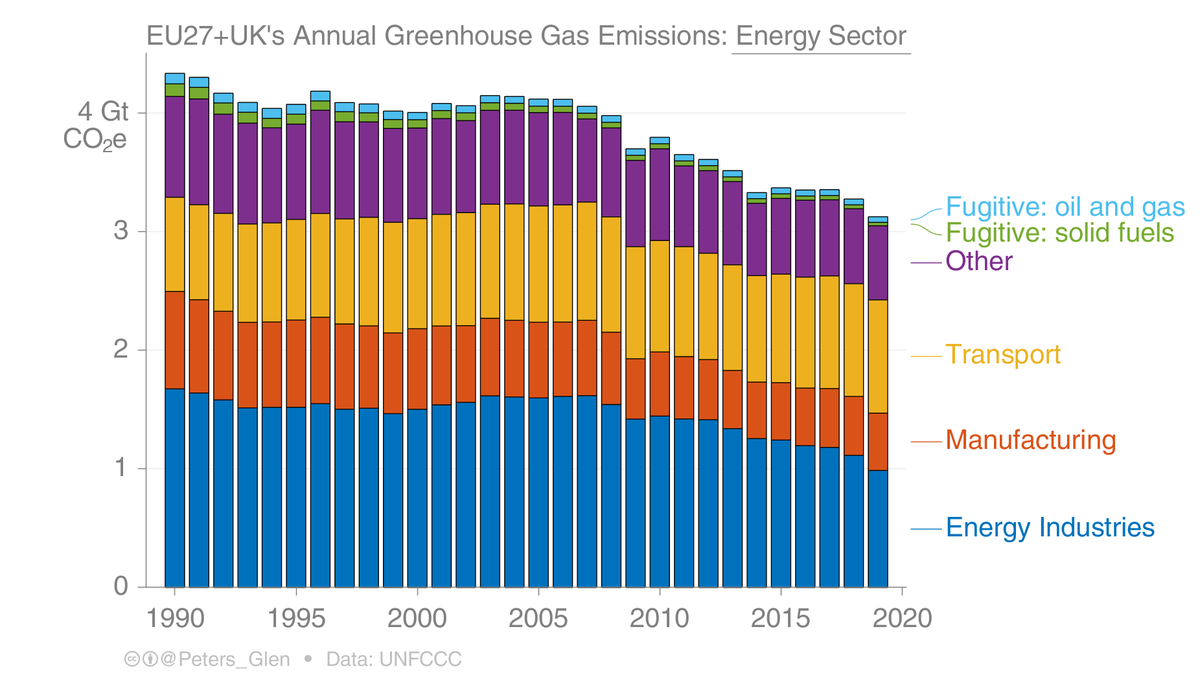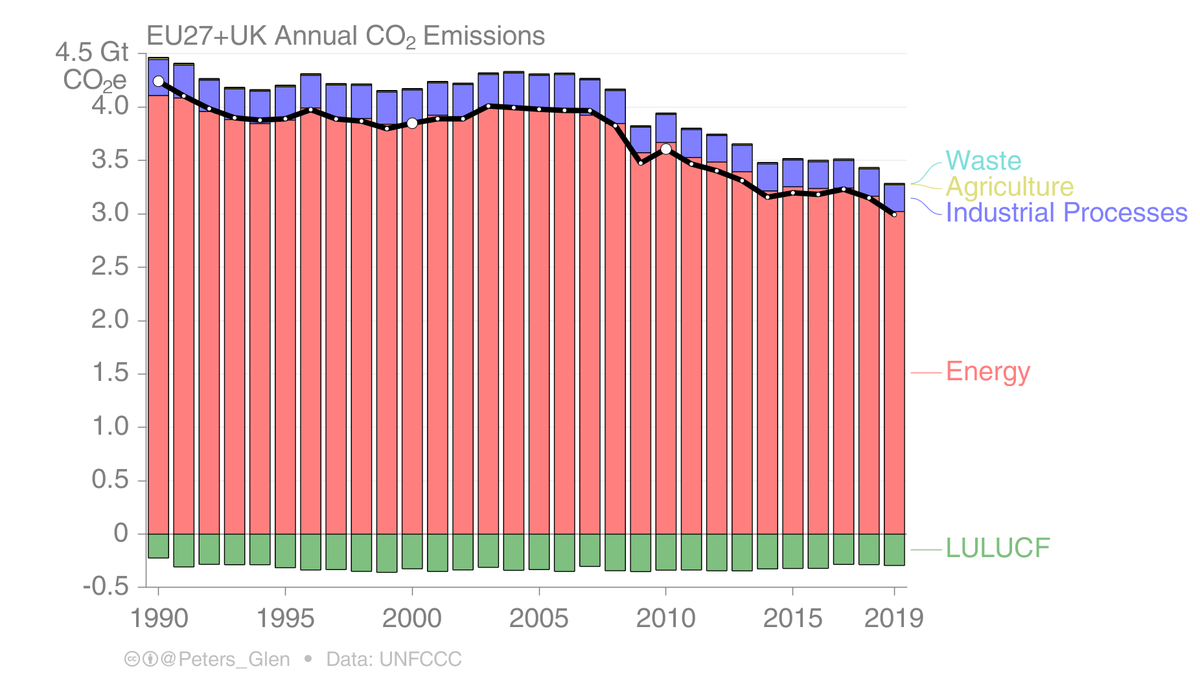
A 🧵 on carbon budget uncertainties (for walkers)...
It is 2km to the lake, which means it could be 1.5km or 2.5km given rounding.
If I have walked 1km, then it is 0.5km to 1.5km to go. That is a huge uncertainty!
1/
It is 2km to the lake, which means it could be 1.5km or 2.5km given rounding.
If I have walked 1km, then it is 0.5km to 1.5km to go. That is a huge uncertainty!
1/

Carbon budgets are often presented for 66% chance (of avoiding the target), which in this analogy, would say after 1km that if I walk 0.5km further there is a 66% chance I have not reached the lake.
Or after 1.5km, there is a 33% change I have still not reached the lake!
2/
Or after 1.5km, there is a 33% change I have still not reached the lake!
2/
There are a few issues here. There will be a non-zero probability I have reached the lake after only 1km, which means the measurements were wrong.
Carbon budget uncertainties for 1.5°C also include negative carbon budgets, meaning it may already be too late to avoid 1.5°C!
3/
Carbon budget uncertainties for 1.5°C also include negative carbon budgets, meaning it may already be too late to avoid 1.5°C!
3/
I have taken 1.5km & 2.5km as a 33-66% chance (as an analogy), but more likely it would be 5-95% chance or higher. This was meant to be an analogy, not science.
4/
4/
This is what scientists do while walking in the forest (or maybe it is just what I do).
Not sure it is such a great analogy, but I am sure most walkers (or riders) are familiar with rounding issues in distance measurements...
/end
Not sure it is such a great analogy, but I am sure most walkers (or riders) are familiar with rounding issues in distance measurements...
/end
• • •
Missing some Tweet in this thread? You can try to
force a refresh



















